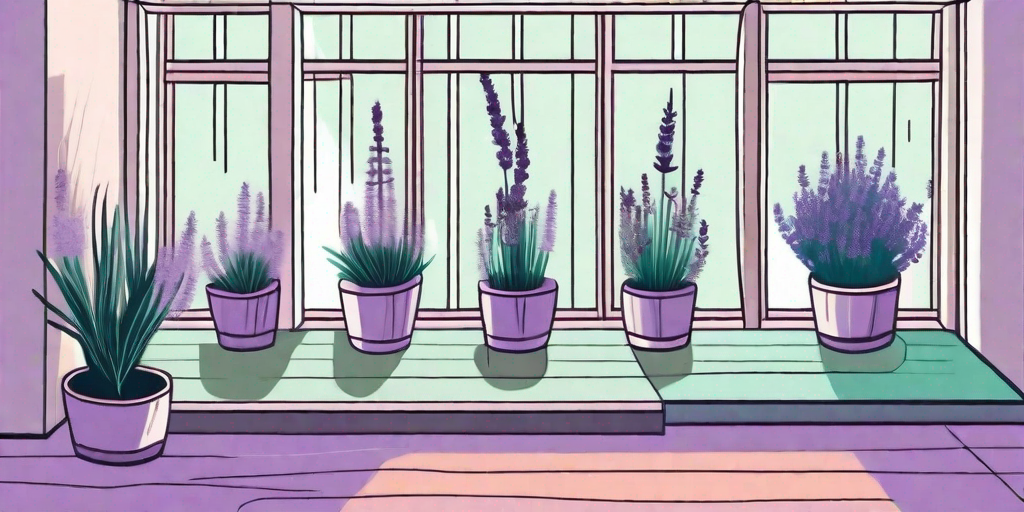
Welcome to the world of lavender - a world filled with soothing scents, vibrant colors, and a sense of tranquility that only nature can provide. If you've ever wished to bring a piece of this world into your home, you're in the right place. We're about to embark on a journey to unlock the secret to a lavender-filled home with potted lavender plants. So, buckle up, and let's get started!
The Lavender Plant: A Brief Introduction
Before we dive into the nitty-gritty of growing lavender at home, let's take a moment to appreciate this wonderful plant. Lavender, a member of the mint family, is known for its beautiful purple flowers and intoxicating fragrance. It's been used for centuries in everything from perfumes and potpourris to teas and tinctures.
But lavender isn't just a pretty face. It's also a hardy plant that can thrive in a variety of conditions, making it an excellent choice for indoor gardening. Plus, it's a natural air freshener and pest repellent, so it's not just your nose that will thank you for bringing lavender into your home.
Choosing the Right Lavender for Your Home
Now that we've covered the basics, it's time to choose the right lavender for your home. Not all lavenders are created equal, and the type you choose can make a big difference in how well your indoor garden thrives.
There are over 40 species of lavender, but a few are particularly well-suited to indoor growing. These include English lavender (Lavandula angustifolia), French lavender (Lavandula stoechas), and Spanish lavender (Lavandula dentata).
English Lavender
English lavender is known for its sweet scent and is often used in cooking and baking. It's also the hardiest of the lavenders, making it a good choice for beginners.
French Lavender
French lavender is a bit more finicky, but its unique, piney scent and beautiful, butterfly-like flowers make it worth the extra effort.
Spanish Lavender
Spanish lavender, with its distinctive, tufted flowers, is a showstopper. It prefers warmer temperatures than the other lavenders, so it's a great choice if you live in a warmer climate.
How to Grow Lavender at Home
Now that you've chosen your lavender, it's time to get down to business. Growing lavender at home is a rewarding experience, but it does require some care and attention. Here's a step-by-step guide to get you started.
-
Choose a pot with good drainage. Lavender doesn't like to have wet feet, so make sure your pot has plenty of holes in the bottom.
-
Fill the pot with a mix of potting soil and coarse sand. Lavender prefers well-draining soil, so this mix will help ensure that your plant doesn't get waterlogged.
-
Plant your lavender. Place the plant in the center of the pot, making sure that the top of the root ball is level with the soil surface. Then, fill in around the plant with more soil, pressing down gently to remove any air pockets.
-
Water your lavender. After planting, give your lavender a good drink. Then, let the soil dry out between waterings to prevent root rot.
-
Place your pot in a sunny spot. Lavender needs lots of light to thrive, so find a spot in your home that gets at least 6 hours of sunlight a day.
-
Prune your lavender. Regular pruning will help your lavender stay healthy and bushy. Just be careful not to cut into the woody part of the plant, as this can harm the lavender.
FAQs
How often should I water my lavender?
Lavender prefers to be on the dry side, so it's best to let the soil dry out between waterings. A good rule of thumb is to water once the top inch of soil is dry.
Can I grow lavender from seed?
Yes, you can grow lavender from seed, but it can be a bit tricky. It's often easier to start with a young plant from a nursery.
Why is my lavender not blooming?
Lavender needs lots of light to bloom, so if your plant isn't flowering, it may not be getting enough sunlight. Try moving it to a sunnier spot.
Conclusion
And there you have it - the secret to a lavender-filled home! With a bit of care and attention, you can enjoy the beauty and fragrance of lavender all year round. So why wait? Start your lavender journey today, and unlock the secret to a happier, healthier home.











